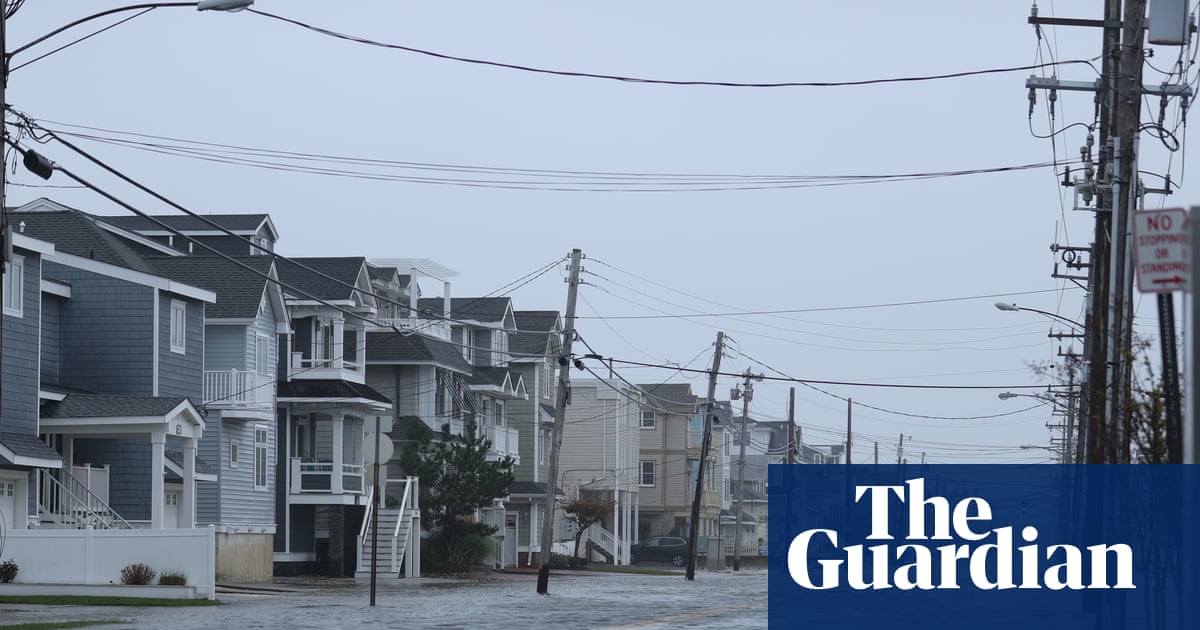After the joy, the trepidation. Or at least the preparation. Democrats, along with many others around the world, cheered this week’s wins in a clutch of off-year elections that saw Donald Trump’s Republicans defeated from sea to shining sea. But now they need to brace themselves for the reaction. Because Donald Trump does not like losing. And he will do everything he can to ensure it does not happen again – by means fair and, more often, foul. Indeed, that effort is already under way.
For now, the Democrats are still clinking glasses, enjoying a success that tastes all the sweeter for coming exactly a year after they lost everything – the House, the Senate and the White House – to a returning and triumphant Trump. The most dramatic win was Zohran Mamdani’s history-making victory in America’s most populous city, New York, but there was success too at the other end of the continent, as voters in California backed Democrats on an apparently technical measure that could prove hugely significant. In between, Democrats won the governorships of New Jersey and Virginia by healthy, double-digit margins.
All this has displeased Trump, but it is the election of Mamdani in Trump’s home city that brought the swiftest response. The forces of Maga have wasted no time in making the man Trump calls a “100% communist lunatic” the face of the Democratic party. The New York Post went early, with a front page showing the new mayor clutching a hammer and sickle, next to the headline “The Red Apple”, with the R reversed to looks suspiciously Soviet. Fox Business also broke out the Bolshevik graphics for a segment on the global threat posed by socialism, featuring international testimony on the failures that ensue when profit is not paramount – including reports on Britain’s own “broken” National Health Service.
The Republican goal is clear enough: to ensure that next year’s nationwide midterm elections – where control of the House of Representatives is on the line – can be fought against a Democratic party recast as Mamdani Marxists. Right now, Democrats are confident they can see off that danger, uniting behind a common message of “affordability”, even as they tailor it to different audiences in different places – much as they did this week, with the victors in Virginia and New Jersey pressing the same cost of living themes as Mamdani but in moderate, suburban colours. That approach could work next year, when the battle for the House amounts to 435 separate elections. Come the presidential election of 2028, however, when Democrats will have to forge a single, national message behind a single, national candidate who can appeal to both cities and suburbs, it will be harder.

Still, that is the kind of challenge politicians are used to tackling. A darker menace looms, and not only in Trump’s heavy hints that he could cut off federal funding to New York. Recall that the president has already broken all precedent by sending US troops into Washington DC and Los Angeles and by attempting to do so in Chicago and Portland, Oregon, supposedly to crack down on rampant crime but, in fact, to assert control over politically disobedient centres of power. No wonder many New York observers suspect it is only a matter of time before Trump dispatches the National Guard to Brooklyn and the Bronx, now that Gotham is in the hands of a sworn foe. Trump always wanted to conquer New York City; now he might just do it.
Such a move would be of a piece with the series of actions Trump seems set to take – or is already taking – to ensure the elections of November 2026 are not allowed to go the way they did this week. Put simply, next year’s contests matter too much for him to let that happen. As of now, Trump has total control of all three branches of the US government: the White House, obviously, but also the supreme court and both houses of Congress, thanks to pliant judges in the former and Republican majorities in the latter. The Senate is unlikely to shift, but given the currently tiny Republican majority in the lower chamber, and the usual midterm swing against an incumbent party, every conventional sign would point to a Democratic takeover of the House in 12 months. If that happens, the rubber stamp will be replaced by a genuine check on the president’s power, one that – especially worrying for him – would have the authority to investigate and hold to account both Trump and those who serve him.
He is determined to avert that outcome. That’s why he leaned on Republicans in Texas, demanding they redraw congressional boundaries to eke out five more safe Republican seats. It was to offset that earlier Texas move that California Democrats asked voters this week for the power to do some redistricting of their own, to give their party up to an extra five Democratic seats in the House. Californians said yes, even those who fear this tit-for-tat gerrymandering represents a race to the bottom that can only weaken US democracy.
But Trump is not done. He has pushed Republicans in North Carolina, Ohio, Missouri and Indiana to follow Texas’s lead, hoping to squeeze out enough extra seats so that his party keeps the House even if voters desert them next November. Others are bracing for a supreme court decision that could weaken a key provision of the Voting Rights Act, one that currently permits state legislatures to consider race when deciding congressional boundaries. That measure has allowed for the crafting of districts that ensure that voters from minorities see their favoured candidates elected. If the court outlaws that practice, Republican-controlled state legislatures could move to eliminate those districts altogether, depriving Democrats of around a dozen seats in the south.
Those are only the most visible threats. In an essay in The Atlantic, David A Graham charts the myriad ways in which Trump and his allies are already working to subvert the midterm elections. Some of it is old-fashioned voter suppression – making the casting of a ballot harder by, say, reducing the availability of early and postal voting or demanding specific forms of ID – while some of it is intimidation.
In the elections just gone, the Trump-controlled department of justice sent “monitors” to watch over polling places in Democratic-leaning areas. When Immigration and Customs Enforcement (ICE) agents are snatching even US citizens off the streets, you can see how the presence of Trump-loyal “monitors” might have a chilling effect, persuading some voters that they’d be safer staying home. The presence of troops in battle fatigues on the streets, which a year from now will come to seem normal in several US cities, will have the same effect – only more so.
All of this comes as Trump has gutted the agency charged with keeping elections secure, slashed funding for the protection of voting from cyber-attack and looked on as many diligent election officials, including traditional Republicans, have been driven out of office and replaced by Maga activists.
Even if the 2026 elections go ahead unhindered, the danger does not end there. Graham warns that Trump could declare a state of emergency, seizing voting machines before a tally is made official. A defeated Republican House speaker could refuse to seat victorious Democrats (as, in fact, Speaker Mike Johnson is already doing). And, through it all, there would be loud voices on Fox News, on social media and perhaps even on some of the mainstream networks that have recently bent the knee to Trump, defending if not applauding his every move.
This week’s results suggest that, if it’s a fair fight, Democrats can win a year from now, finally putting a brake on Trump’s march towards autocracy. But that’s a big if – and with each passing day, it’s only getting bigger.
-
Jonathan Freedland is a Guardian columnist and host of the Politics Weekly America podcast

 3 weeks ago
20
3 weeks ago
20

















































